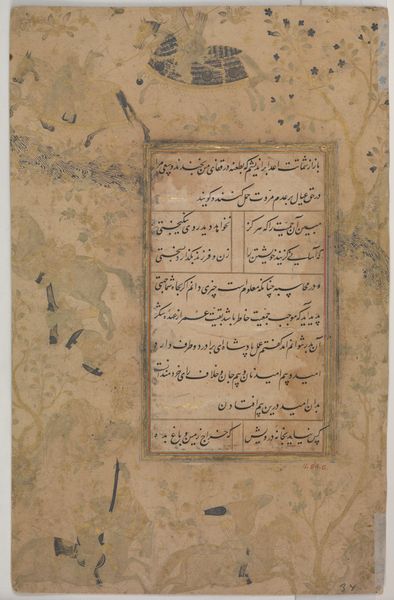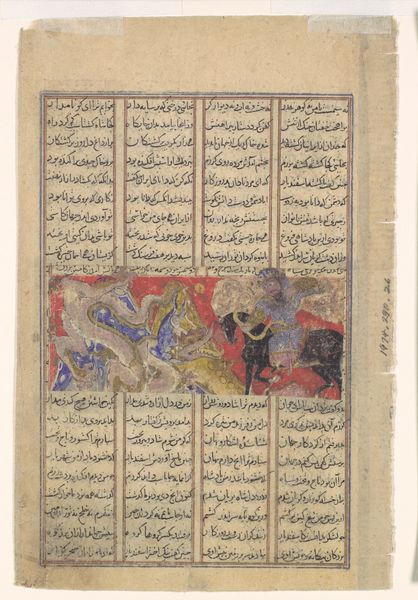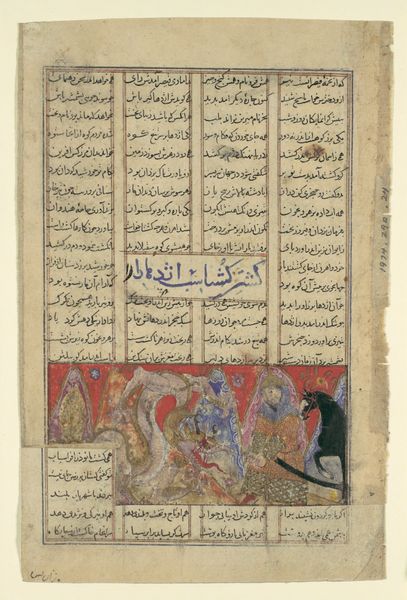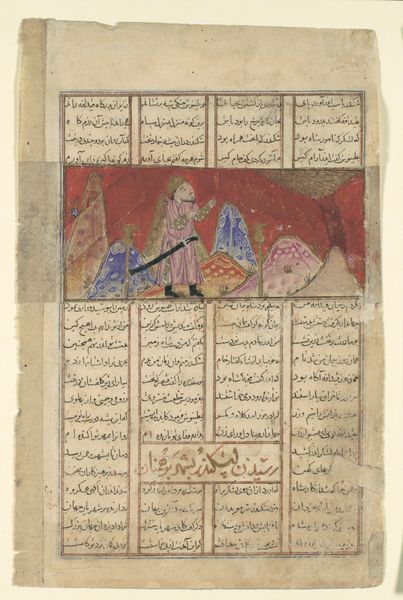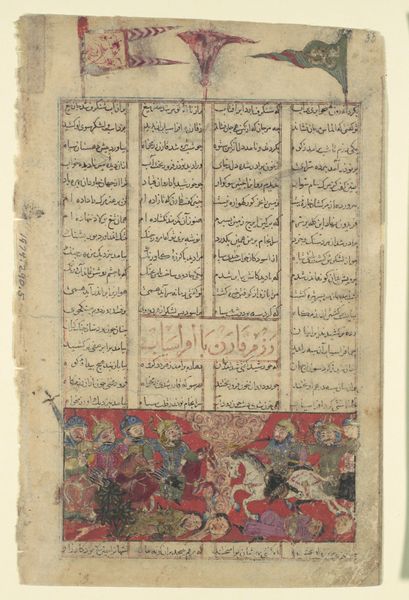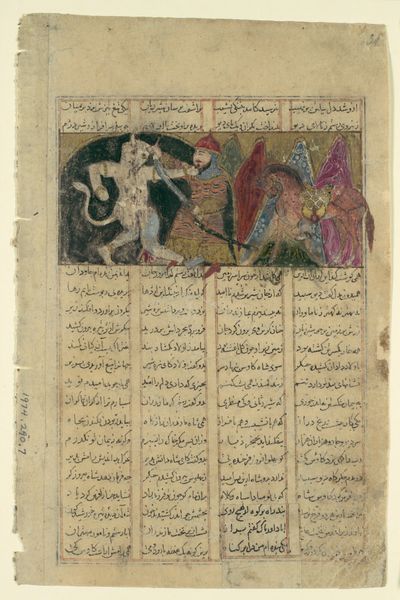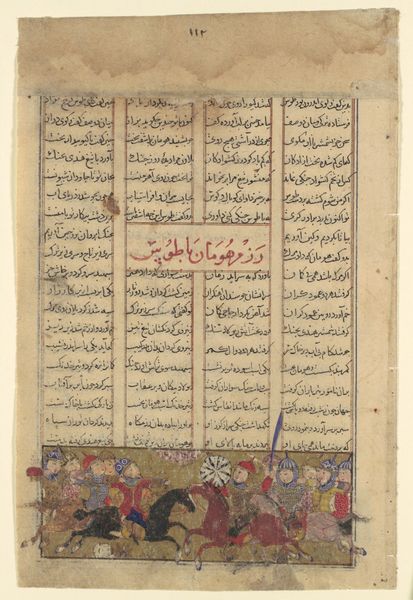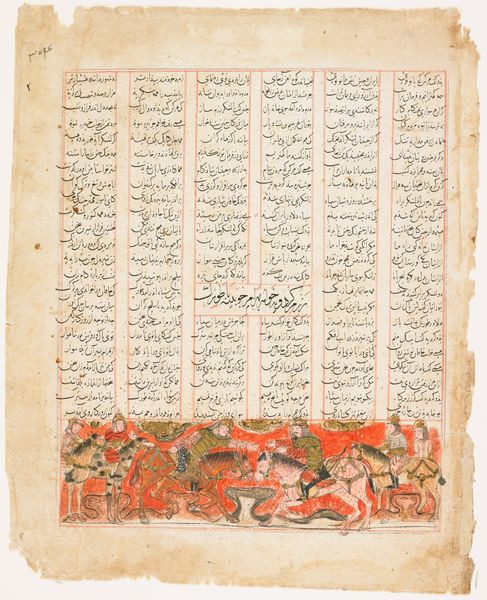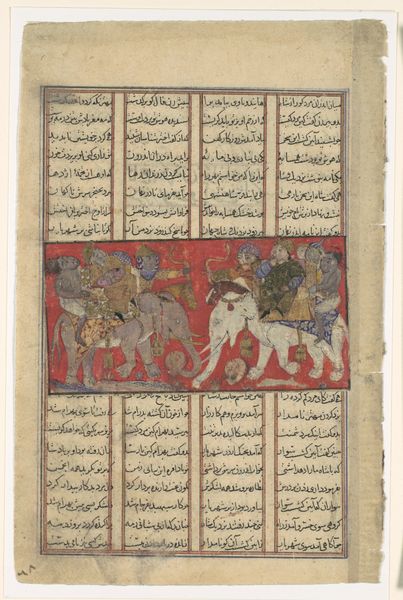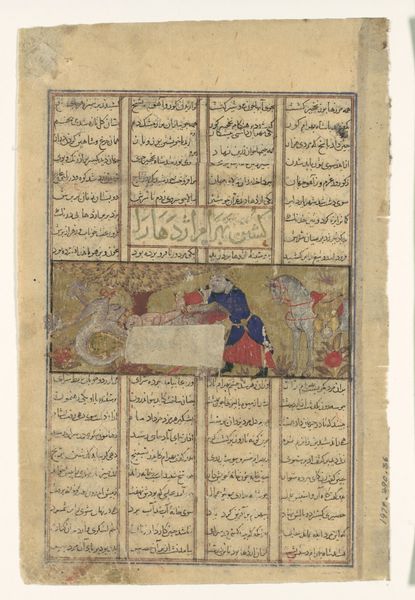
"Bahram Gur Hunting with Azada", Folio from a Shahnama (Book of Kings) 1327 - 1377
0:00
0:00
painting, watercolor
#
medieval
#
narrative-art
#
painting
#
figuration
#
watercolor
#
coloured pencil
#
men
#
islamic-art
#
history-painting
#
miniature
Dimensions: Painting: H. 3 3/16 in. (8.1 cm) W. 6 in. (15.2 cm) Page: H. 11 1/2 in. (29.2 cm) W. 8 5/16 in. (21.1 cm) Mat: H. 19 1/4 in. (48.9 cm) W. 14 1/4 in. (36.2 cm)
Copyright: Public Domain
Editor: So, this watercolor, "Bahram Gur Hunting with Azada," is a folio from the Shahnama, or Book of Kings. It's dated sometime between 1327 and 1377. The miniature painting is incredible, the detail for such a small surface. I'm struck by how the red background makes everything pop, but there's also something unsettling about the scene itself. What do you see in this piece? Curator: The red ground is a very charged choice. In Persian miniature painting, color wasn't just decorative; it was deeply symbolic. Here, red can signify both royalty and violence. Considering the subject is a hunt, a royal hunt no less, it underscores the complex relationship between power, privilege, and the natural world, doesn't it? It also subtly reflects the turbulent political environment during the Ilkhanate period when this was made. Do you see other indications of that complexity? Editor: Yes, I'm noticing the power dynamic – Bahram Gur is literally on horseback, elevated above everyone else, including Azada. I hadn't initially picked up on the context of the Ilkhanate period. It gives a different dimension to this work. Curator: Exactly. Who is afforded representation and how? Azada, a musician, shares this space but doesn't have the same status as the king. What does it mean for a woman to be participating in a hunt with a powerful king during this period? Considering these complex power dynamics allows us to ask even more probing questions of the work. Editor: I see what you mean. Viewing it this way really highlights those power dynamics and forces us to question what might have been normalized in that time and how those values are embedded in the visual representation. Curator: And those visual representations can provide clues, sometimes problematic ones, about the lived experiences and social norms for the time. Editor: I will definitely remember that art is intertwined with complex power dynamics and to question whose narrative is being presented. Curator: Indeed, let’s continue this conversation soon, building these critical skills with other complex artworks.
Comments
No comments
Be the first to comment and join the conversation on the ultimate creative platform.
